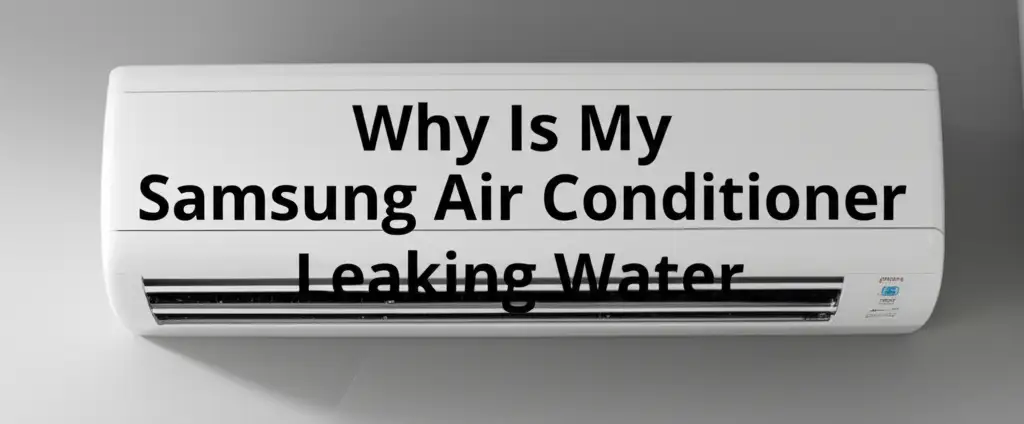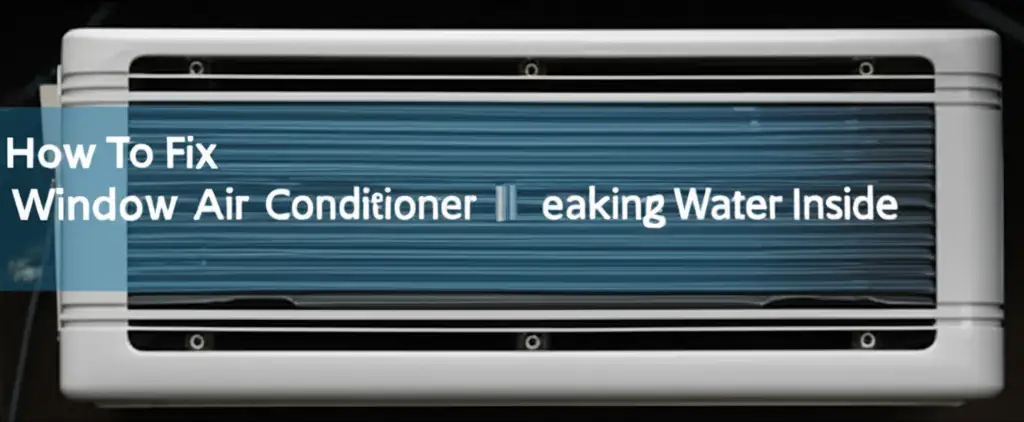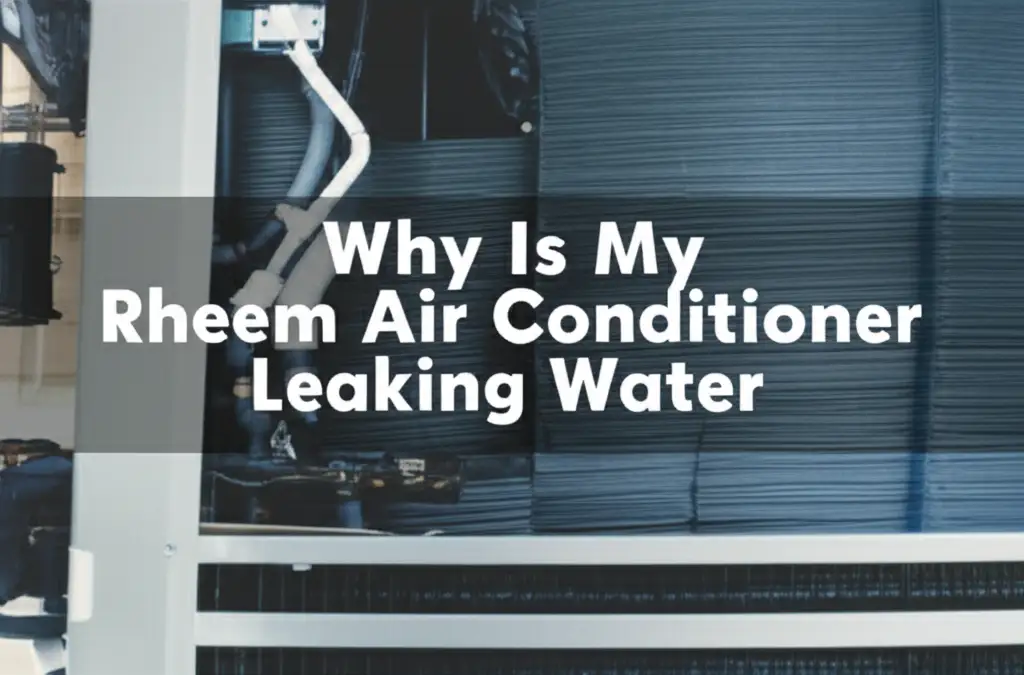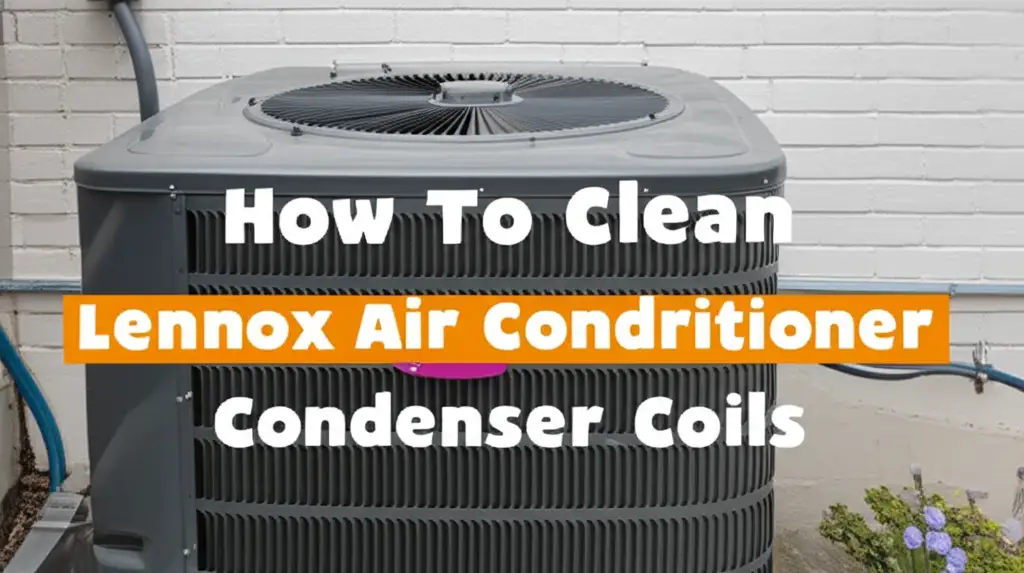· Todd Martin · Home Maintenance · 14 min read
Why Does My Central Air Conditioner Keep Turning On And Off
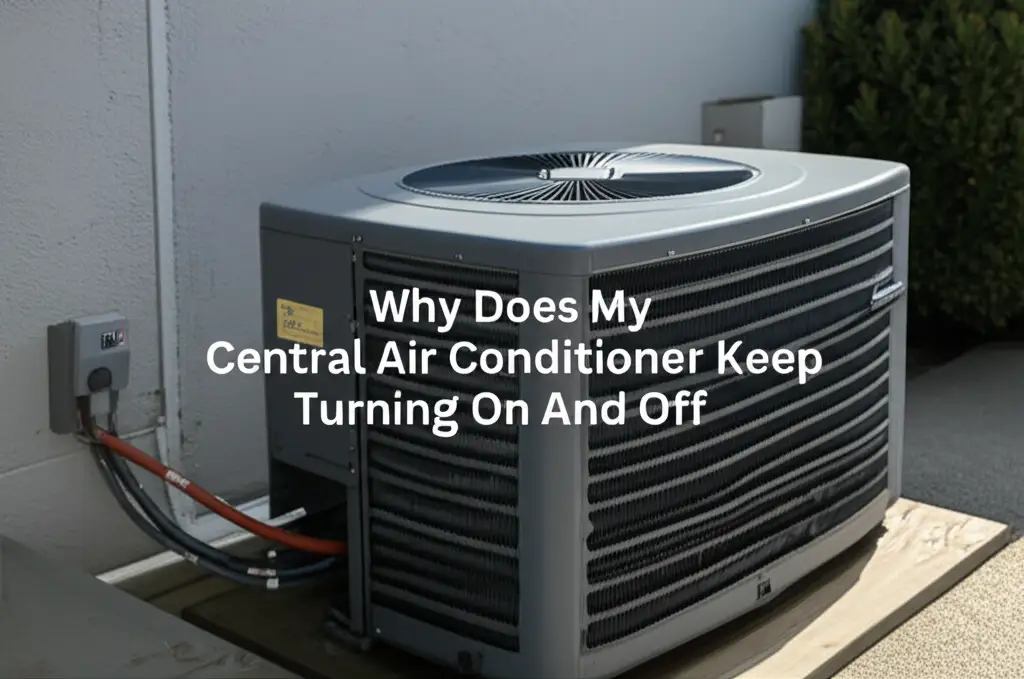
Why Your Central AC Keeps Cycling On And Off
It is a common question: “Why does my central air conditioner keep turning on and off?” This issue, known as short cycling, causes worry for many homeowners. Your AC unit should run for a specific time, then shut off until the next cooling cycle. When it starts and stops too often, it signals a problem. This constant starting and stopping can increase your energy bills. It also puts extra stress on the system’s parts. Ignoring it can lead to bigger, more expensive repairs. I want to help you understand why this happens. In this article, I will explain the main reasons for short cycling. I will also give you steps to take to fix these issues. We will cover everything from simple checks to when you need professional help.
Takeaway
- Check Your Thermostat: Ensure settings are correct and the unit has fresh batteries.
- Inspect Air Filters: A dirty filter restricts airflow, causing your AC to work harder.
- Clean Coils: Keep both indoor (evaporator) and outdoor (condenser) coils free of dirt.
- Monitor Refrigerant: Low refrigerant means a leak; this needs professional help.
- Consider Unit Size: An oversized AC cools too fast, leading to short, frequent cycles.
- Look for Ice: Ice on coils points to airflow problems or low refrigerant.
- Address Electrical Issues: Faulty components can cause erratic operation.
Your central air conditioner keeps turning on and off, or short cycling, because of various issues. These issues include a faulty thermostat, dirty air filters, clogged coils, low refrigerant, an oversized unit, or electrical problems. These issues cause the AC to cool inefficiently or stop before completing a full cooling cycle.
Thermostat Troubles: Your AC’s Control Center
Your thermostat is the brain of your central air conditioner. It tells the unit when to turn on and off. If this device has problems, your AC may short cycle. Simple issues like low batteries can cause wrong signals. A thermostat in direct sunlight can also cause false readings. It thinks the room is warmer than it truly is.
Sometimes, the thermostat’s location is the issue. If it is near a heat source, like a lamp or a vent, it will sense higher temperatures. This makes the AC turn on more often. If the thermostat wires are loose or corroded, the connection breaks. This leads to erratic operation and frequent cycling.
You should check your thermostat settings first. Make sure it is set to “Cool” and not “Auto” if you want continuous fan operation. Ensure the temperature setting is not too close to the current room temperature. This can cause the AC to click on and off without much cooling. Replacing old batteries often solves many thermostat problems quickly.
You can also try calibrating your thermostat if it has this feature. A simple recalibration ensures accurate temperature readings. If problems continue, consider moving the thermostat to a better location. If these basic checks do not fix it, the thermostat itself might be faulty and need replacement.
Dirty Air Filters: A Blocked Breath for Your AC
A dirty air filter is a very common reason for a central air conditioner to short cycle. Your AC unit needs a free flow of air to work properly. When the air filter becomes full of dust and debris, it blocks this airflow. This restriction means your AC cannot pull enough warm air from your home.
When air flow is low, the evaporator coil inside your AC unit cannot absorb enough heat. This lack of heat transfer causes the coil to get too cold. Eventually, ice forms on the coil. An iced-up coil further blocks airflow, creating a cycle of problems. Your AC then struggles to cool the house.
The system will work harder to overcome the blockage. This extra effort puts stress on the compressor. To prevent damage from overheating, the AC’s safety features may cause it to shut down quickly. Then, it turns back on, thinking it can still cool, only to repeat the shutdown. This leads to the frustrating on-and-off cycling.
I always recommend checking your air filter regularly. Most manufacturers suggest changing or cleaning filters every 1 to 3 months. If you have pets or allergies, you may need to do it more often. A clean filter ensures proper airflow, which helps your AC run smoothly and efficiently. You can find detailed guides on how to clean air conditioner filter and generally how to clean air conditioner to keep your system in top shape.
Clogged Condenser Coils: The Outdoor Unit’s Heat Trap
The condenser coils are part of your outdoor AC unit. Their job is to release the heat absorbed from your home into the outside air. If these coils are covered in dirt, leaves, grass clippings, or other debris, they cannot release heat effectively. This is like trying to breathe with a pillow over your face. The unit struggles to perform its main function.
When the condenser coils are clogged, the refrigerant inside them cannot cool down properly. This causes the pressure and temperature within the AC system to rise. The compressor, which pumps the refrigerant, has to work much harder. This extra strain can cause the compressor to overheat. AC systems have safety mechanisms to prevent damage from overheating.
When the system senses it is too hot, it automatically shuts down. This quick shutdown is a protection measure. Once the compressor cools slightly, the unit tries to turn back on again. It then quickly overheats and shuts off again, leading to frequent on-and-off cycling. This process is bad for the longevity of your AC unit.
Regular cleaning of your outdoor condenser unit is key. You should clear away any plants or debris from around the unit. Also, carefully spray down the fins of the condenser coils with a hose. This helps remove trapped dirt and dust. Proper cleaning allows your unit to release heat efficiently. Learning how to clean air conditioner coils or the entire air conditioner unit can greatly improve its performance and prevent short cycling.
Low Refrigerant Levels: The Lifeblood of Your AC System
Refrigerant is crucial for your central air conditioner to cool your home. It absorbs heat from inside and releases it outside. If your system has low refrigerant levels, it means there is a leak somewhere. Refrigerant does not get used up like gasoline. It circulates in a closed loop, so low levels always point to a leak.
When refrigerant levels drop, your AC system cannot absorb enough heat from your indoor air. The air blowing from your vents may not feel as cold as it should. The unit will run and run, trying to reach the set temperature, but it will struggle. Because it cannot reach the desired temperature, it might cycle on and off frequently without truly cooling your home. This struggle puts a lot of strain on the compressor.
Low refrigerant can also lead to the evaporator coil freezing up. As the refrigerant pressure drops, the coil temperature drops too low. This causes ice to form on the indoor coil, further blocking airflow and making the problem worse. An iced-up coil can also cause the AC to cycle off to prevent damage.
Addressing a refrigerant leak is not a do-it-yourself job. You need a certified HVAC technician. They can find the leak, repair it, and then properly recharge the system with the correct amount of refrigerant. If your AC is running but not cooling, or if you suspect a leak, it is best to call a professional. They can diagnose the issue accurately and prevent further damage. Often, a unit that is running but not cooling properly will also begin to short cycle due to this underlying problem. You can learn more about this specific issue by reading why is my central air conditioner running but not cooling the house.
Oversized Air Conditioner: Too Much Power, Too Soon
An air conditioner needs to be the right size for your home. If your central air conditioner is too large for the space it cools, it can cause short cycling. This happens because an oversized unit cools your home very quickly. It reaches the set temperature on your thermostat in just a few minutes. Then, it shuts off.
The problem is that the AC unit turns off before it has completed a full cooling cycle. It does not run long enough to effectively remove humidity from the air. High humidity can make a home feel warmer, even if the air temperature is cool. So, your home might feel clammy or uncomfortable, even though the thermostat shows the right temperature.
Because it cycles off so fast, the unit turns back on again soon after. It repeats this pattern throughout the day, cooling the air quickly, shutting off, and then turning back on. This constant starting and stopping is inefficient. It wastes energy and puts more wear and tear on the compressor and other components. An oversized unit is a common cause of frequent short cycling.
If you suspect your AC unit is too big, a professional HVAC technician can perform a load calculation for your home. This calculation helps determine the correct size of AC unit you need based on factors like square footage, insulation, windows, and climate. While replacing an oversized unit is a big investment, it can save you money on energy bills and improve comfort in the long run. Understanding how to figure out what size central air conditioner you need is important for efficient cooling.
Iced Up Evaporator Coil: The Indoor Freeze
The evaporator coil is located inside your home, typically above the furnace in the air handler. This coil is responsible for absorbing heat from your indoor air. When the evaporator coil becomes iced up, it creates significant problems for your central air conditioner, including short cycling. Ice forms on the coil for a few main reasons.
One common cause is restricted airflow. This can happen if your air filter is extremely dirty, if return air vents are blocked, or if supply registers are closed. When not enough warm air flows over the coil, the coil gets too cold. The refrigerant inside it then causes condensation to freeze on the coil’s surface. A refrigerant leak can also cause this problem, as low pressure leads to very low temperatures on the coil.
Once ice builds up, it acts like an insulator. It prevents the coil from absorbing heat effectively. Your AC system struggles to cool the air, and the compressor strains to work against the frozen coil. This extra strain can cause the AC to overheat or trigger safety shut-offs. The unit cycles off quickly to prevent damage, then turns back on when it “thinks” it is ready. This leads to the on-and-off cycling you observe.
If you see ice on your evaporator coil, turn off your AC unit immediately. Let the ice melt completely. This can take several hours. While it melts, check your air filter and replace it if dirty. Ensure all supply and return vents are open and clear of obstructions. If the problem persists after the ice melts and you have cleared airflow issues, you likely have a refrigerant leak, and you need professional help. Knowing how to clean air conditioner filter is a simple first step to prevent this issue.
Electrical Issues and Malfunctions: The Hidden Gremlins
Electrical problems can certainly cause your central air conditioner to keep turning on and off. AC units have many electrical components that must work together perfectly. If any of these parts fail, it can disrupt the entire cooling cycle. This leads to erratic operation and frequent short cycling.
One common electrical issue is a faulty capacitor. Capacitors provide the initial jolt of electricity needed to start the compressor and fan motors. If a capacitor is weak or blown, the motor might struggle to start, try, fail, and then try again. This stop-start action results in short cycling. Another problem can be with the contactor. This component acts as a switch, connecting power to the outdoor unit. If the contactor is worn or dirty, it might not make a consistent connection, causing the unit to cycle on and off rapidly.
Fan motor problems, either in the outdoor condenser unit or the indoor blower, can also cause issues. If a fan motor is failing, it might not spin at the correct speed or stop entirely. This prevents proper airflow or heat exchange. The system then overheats or struggles, triggering safety shut-offs that lead to short cycling. Wiring issues, loose connections, or even a tripped circuit breaker can also interrupt power flow to the AC unit.
Diagnosing electrical issues requires specialized tools and knowledge. It is dangerous to attempt these repairs yourself if you are not trained. I recommend calling a certified HVAC technician if you suspect an electrical problem. They can safely test components, find the exact fault, and replace any bad parts. This ensures your AC runs safely and efficiently.
FAQ Section
Q1: How long should my central AC run before turning off?
A central AC unit should typically run for about 15 to 20 minutes per cycle in mild weather. In hotter weather, it might run longer, up to 30-40 minutes or even continuously during peak heat. The exact run time depends on your home’s size, insulation, and the outside temperature. Short cycles, under 10 minutes, usually mean a problem.
Q2: Is short cycling bad for my AC unit?
Yes, short cycling is bad for your AC unit. It causes increased wear and tear on the compressor, which is the most expensive part to replace. Frequent starting and stopping also uses more electricity, raising your energy bills. Ignoring short cycling can lead to premature system failure and costly repairs.
Q3: Can a dirty drain line cause AC short cycling?
A dirty or clogged AC drain line can cause water to back up in the condensate pan. If the pan fills, a float switch can trigger the system to shut down. This is a safety measure to prevent water damage. While it’s a shutdown, not true short cycling, it can appear as frequent stops if the pan fills quickly. Cleaning the drain line is a good maintenance step.
Q4: What is the first thing I should check if my AC is short cycling?
The first thing you should check is your thermostat. Ensure it has fresh batteries and is set correctly. Verify the temperature setting is appropriate. Also, check the air filter. A dirty air filter is a very common and easy-to-fix cause of short cycling. These are simple steps you can take before calling a professional.
Q5: How do I know if my AC needs more refrigerant?
You might suspect your AC needs more refrigerant if the air blowing from your vents is not cold enough. You might also notice ice on the indoor evaporator coil. Hissing or gurgling sounds can also point to a leak. Since refrigerant leaks require professional tools and handling, you should call an HVAC technician if you notice these signs.
Q6: When should I call a professional for AC short cycling?
You should call a professional if basic checks like thermostat settings, air filter replacement, and outdoor unit cleaning do not solve the short cycling problem. Any issues involving refrigerant leaks, electrical component failures, or questions about your AC unit’s size need expert help. A technician can diagnose complex issues safely and effectively.
Final Thoughts on Your AC’s On-Off Behavior
Discovering why your central air conditioner keeps turning on and off helps you keep your home comfortable. Short cycling is more than just annoying; it signals an underlying problem. From a simple dirty filter to a more complex refrigerant leak, many issues can cause your AC to cycle improperly. I hope this guide has given you clear steps to check for common culprits. Remember, addressing these issues quickly saves you money on energy bills and prevents more serious damage.
Regular maintenance is key to a long-lasting and efficient central air conditioner. Cleaning filters, coils, and keeping the area around your outdoor unit clear are small steps that make a big difference. If you have gone through these checks and your AC still short cycles, do not hesitate to call a certified HVAC professional. They have the tools and knowledge to diagnose and fix complex problems safely. Taking good care of your AC means enjoying cool, comfortable air for many years to come. Act now to stop the short cycling and get your AC running smoothly again.


